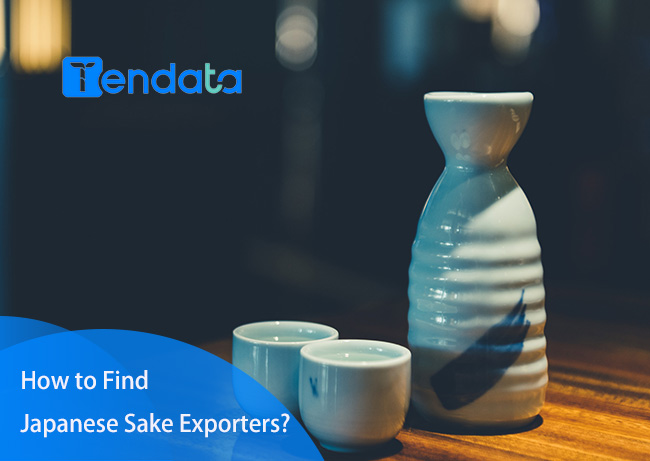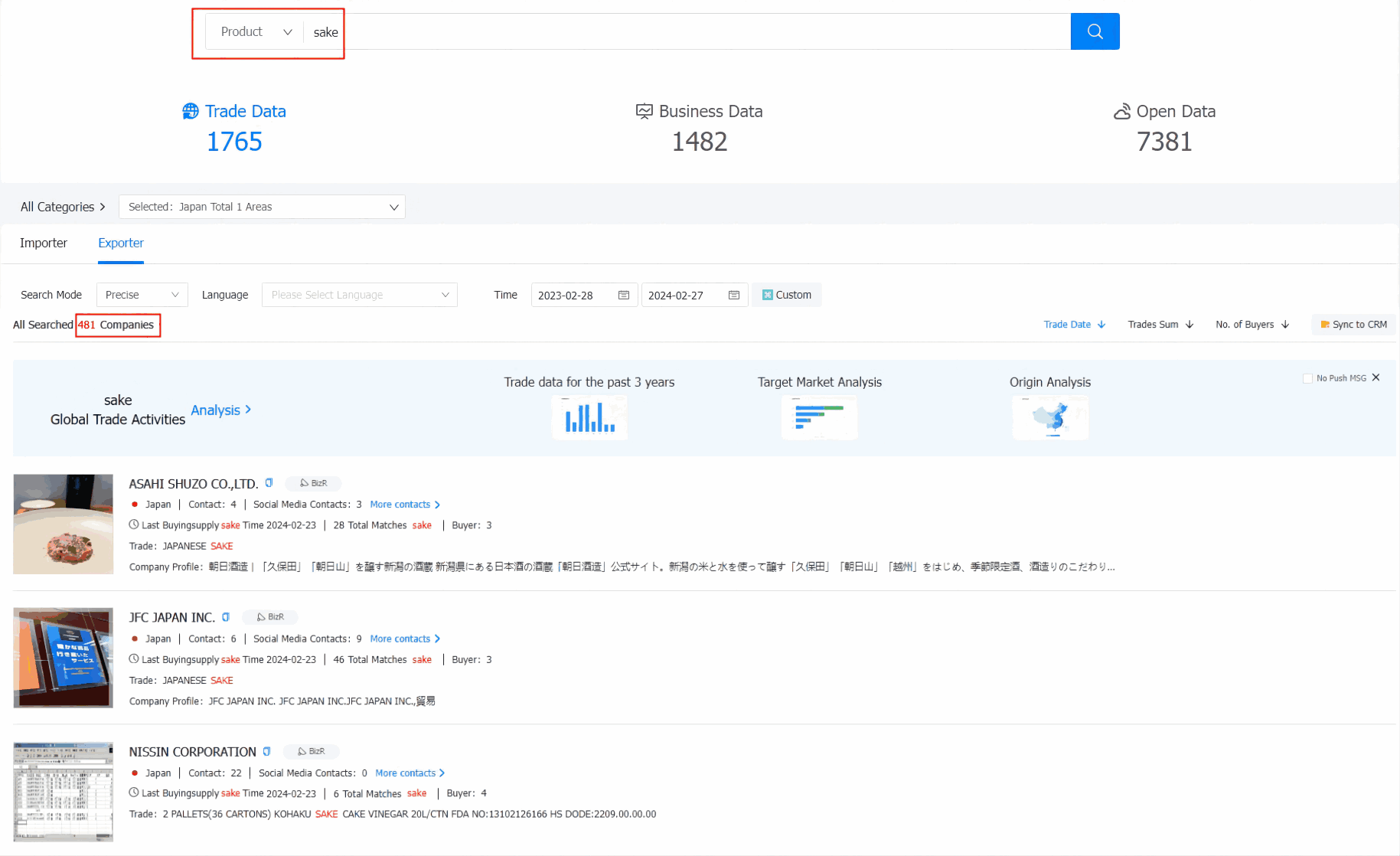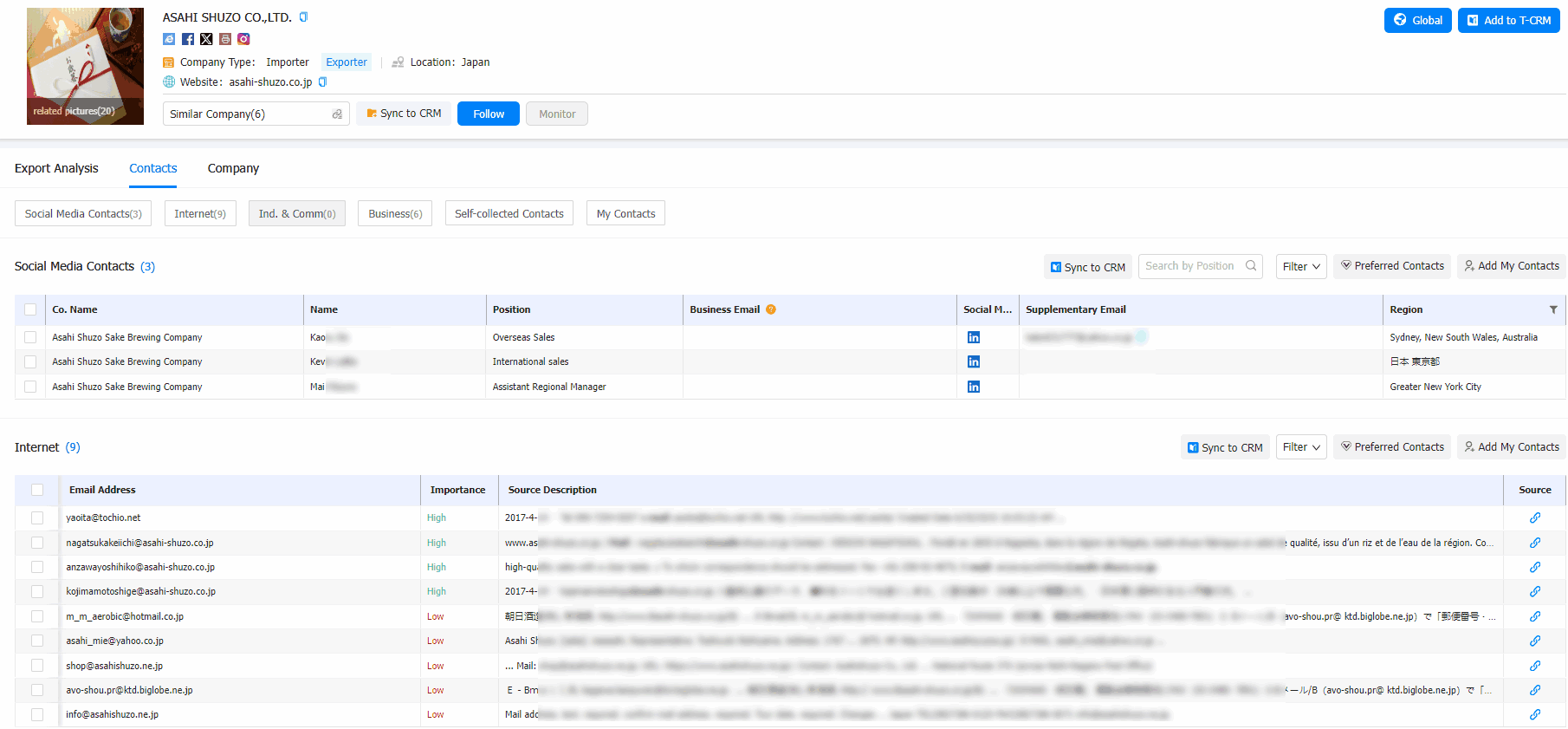 Export News
Export News
 27-02-2024
27-02-2024
Sake, a traditional Japanese rice wine crafted through the fermentation of rice, has a rich history dating back to the 2nd century. Notably, during the 7th and 14th to 16th centuries, significant strides were made in the brewing process of this iconic beverage.
Sake export stands out as a unique libation, offering a diverse array of flavors—from the freshness of newly brewed sake to fruity undertones. This versatile drink can be savored at various temperatures and enjoyed both when freshly produced and after maturation. Moreover, sake export complements a wide range of dishes, with some establishments offering specialized services for pairing sake export with culinary delights.

Key Points of the Sake Export Market in 2023:
· The total value of sake export in 2023 reached 41.08 billion Japanese Yen (approximately 275 million USD), marking an impressive 87% year-on-year growth. The export volume amounted to around 29,000 liters, reflecting an 81% year-on-year increase.
· The leading countries in sake import, based on value, were China, the United States, Hong Kong, South Korea, and Taiwan.
· The average price of exported sake surpassed 1,407 Japanese Yen.
Sake Export Statistics for 2023:
In 2023, the total value of sake export declined to 41.08 billion Japanese Yen (approximately 275 million USD), an 87% decrease compared to the previous year. The export volume also decreased to around 29,000 kiloliters, reflecting an 81% year-on-year decrease. Despite the substantial drop in overall export volume, the decline in export value and quantity is not as pronounced, indicating a sustained demand for high-value sake export products.
Sake Export Statistics by Country/Region:
· China and the United States: China and the United States bore the brunt of the impact, accounting for about half of the total export value and quantity. Economic slowdown in China and temporary import restrictions on Japanese seafood adversely affected high-end Japanese restaurants, major channels for premium sake export. In contrast, the U.S. faced challenges related to inventory adjustments and suppressed consumer confidence due to labor shortages and inflation.
· Emerging Markets: Despite challenges, some countries experienced positive growth. Particularly, strong growth was observed in sake export to South Korea and Taiwan, with Italy, Brazil, and Spain exceeding the previous year's data.
· Diversification of Export Destinations: The number of countries importing Japanese sake reached a record 75 in 2023, indicating an expanding market beyond traditional stronghol
In 2023, China emerged as the largest destination for Japanese sake export by value, with an export value of approximately 124.7 billion Japanese Yen (an 88% year-on-year increase), while the United States led in terms of quantity. Sake export to South Korea and Taiwan witnessed growth, with South Korea at 29 billion Japanese Yen (a 115.1% year-on-year increase) and Taiwan at 26.8 billion Japanese Yen (a 120.5% year-on-year increase). Growth was also observed in Italy, Brazil, and Spain.
In volume terms, the United States imported over 6.5 million liters of sake, equivalent to approximately 9 million 720-milliliter sake export bottles. China imported around 5.7 million liters of sake, followed by South Korea, which imported nearly 4.2 million liters. In 2023, among the top 10 sake-exporting countries, only South Korea and Taiwan saw an increase in export volume.
In 2023, the total number of sake-importing countries reached a record 75, indicating the continuous expansion of the global market for Japanese sake export. In 2007, Japanese sake was only exported to 53 countries.
Despite a decrease in the overall export volume and value of Japanese sake in 2023, the export value per liter continued to rise, reaching a historical high. This growth reflects the ongoing trend of demand for premium Japanese sake export, especially in markets such as China, Hong Kong, and Singapore, where the price per liter exceeds 2,000 Japanese Yen. Over the past decade, this figure has more than doubled, increasing from 650 Japanese Yen per liter in 2013 to 1,407 Japanese Yen per liter in 2023, indicating a robust global demand for high-priced sake export varieties.
How to Find Japanese Sake Exporters?
Looking ahead, with the continuous growth of inbound tourism to Japan and the widespread popularity of Japanese culinary concepts, Japanese sake exporters are confident in positive development prospects for the coming years. Additionally, the trend towards premiumization continues, as the export value per liter of sake consistently reaches new highs, highlighting the enduring allure of high-quality Japanese sake on the global stage. So, how can one find Japanese sake exporters engaged in diversified, premium, and targeted marketing efforts?
Customs data is one of the swift ways to locate Japanese sake exporters. By inputting "sake" on customs data platforms and setting the country as "Japan," you can quickly view all Japanese companies that have exported sake in the past year.

When further background checks are needed, clicking on the Japanese sake exporter of interest on the customs data platform reveals comprehensive company information, including company address, operational details, company identification codes, business information, shareholder details, financial information, trademark information, company relationships, and more.

For creating customer profiles, the customs data platform provides insights into the trade volume, trade amount, specific traded products, HS code lists, quantities, weights, box counts, trade partners, trading countries, ports, latest demands, and more of Japanese sake exporters in the past year. With this information, you can confirm the customer segmentation of the company.
Most importantly, when you need to get in touch with Japanese sake exporters, the customs data platform provides specific contact details, including publicly available company websites, company phone numbers, company social media, as well as non-public executive contact information (email, phone, etc.). These verified company contact details help you swiftly connect with Japanese sake exporters!

>>>Click to Get 91 Countries' Customs Data for Free<<<
The first step in international trade is to understand the trade information of both buyers and sellers. In the era of big data, enterprises that can effectively use customs data will find it easier to stand out in a competitive environment. For import and export businesses, trade data is one of the most valuable types of data, enabling companies to gain in-depth insights into their market conditions from multiple dimensions, including market trends, customers, and competitors. Follow Tendata to see how to analyze the market using customs import-export data.
I. Obtain Customs Data for 91 Countries and Identify Suitable Customers
Tendata's customs database provides real-time global customs data covering 91 countries, data for 42 countries along the Eurasian route, 100+ billion real-time trade data, and information on 180 million global enterprises. It helps you understand global market trade trends and distribution, allowing you to quickly, accurately, and scientifically target hot-selling countries and emerging markets for your products. >>>Consult Online
II. Present Trade Details and Directly Contact Buyers
Import and export data is one of the fundamental tools for Importers & Exporters to develop customers. It enables them to go from understanding the market to knowing competitors and then to developing customers.
Tendata iTrader provides various search criteria to examine details of each cross-border transaction, such as importer & exporter information, product categories, transaction quantities, transaction amounts, country of origin, carrier, port of departure, and port of arrival. Quickly and in bulk, obtain buyers based on their purchase volume, price, and preferences, positioning your target customers. By comparing historical data, quickly identify genuine buyers, providing you with precise opportunities for successful transactions. >>>Click to Get Sample Online
III. Professional Market Analysis to Seize Opportunities for Transactions
Which website is good for querying customs data? This is something many import and export enterprises are very concerned about!
Tendata's customs data platform offers nearly 20 types of customizable, multi-dimensional market analysis reports (>>>Click to Use Data for Free Online). It allows for easy capture of the main markets and customers of competitors. Through the analysis of the volume and price of peer transactions and the supply chain analysis of target customers, detailed information on customer bills of lading, competitor details, and intelligent generation of various data analysis reports highlights your competitive advantages, helping you seize more market share.

>>>Consult with 1-on-1 Online Customer Service<<<
Category
Leave Message for Demo Request or Questions


 T-info
T-info T-discovery
T-discovery

 My
Tendata
My
Tendata Market Analysis
Market Analysis Customer
Development
Customer
Development Competitor
Monitoring
Competitor
Monitoring Customer Relationship
Customer Relationship





































































































































